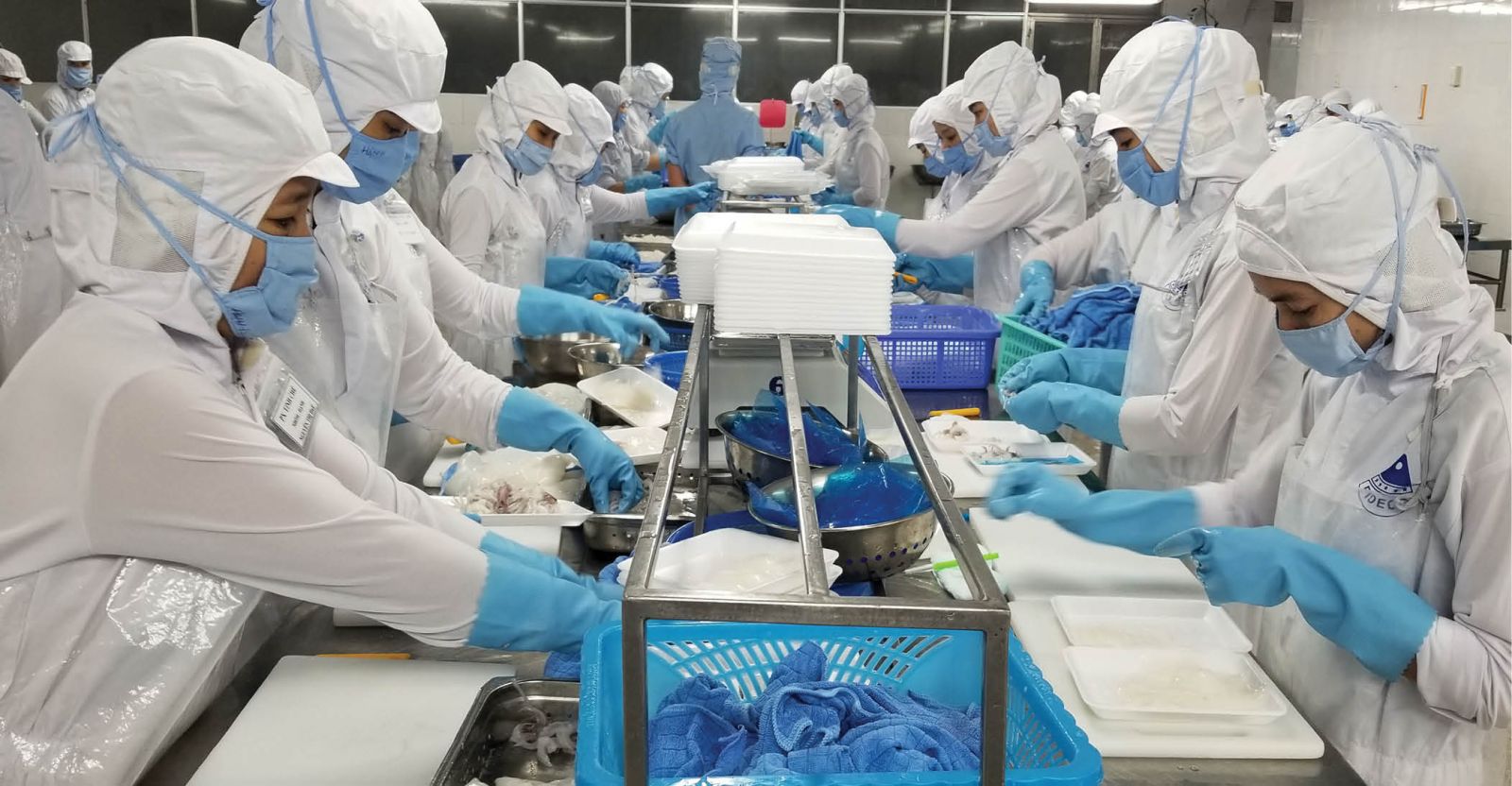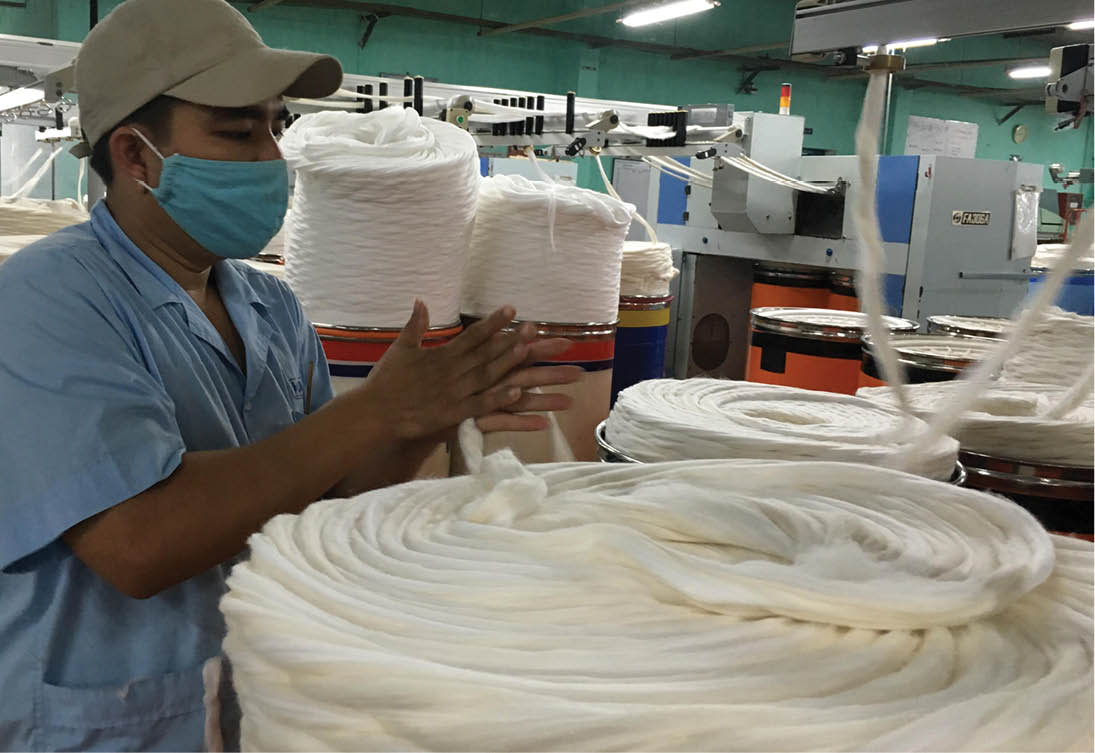
Processing export seafood at Thua Thien Hue Seafood Development Company
A shift in supply chain
2019 is seen as a bonanza year for exporting wood and wood products when reaching the ET of US 110 million, up 50% against 2018, the highest ever level.
With 8 enterprises involved in processing and exporting wood and wood products, this is a potential field that may reach a higher growth rate in 2020. This is the time when the enterprises will promote investment in machinery and technology shifting from woodchip production to wood products alongside with the province’s the increased call for investment in the projects on manufacturing wooden furniture for export.
Operating on a small scale in Phu Bai Industrial Park since 2003, the ET has reached only a few hundred thousand USD. In 2019, Thua Thien Hue Wood Processing Joint Stock Company marked an outstanding development when the ET reached nearly USD 3 million, a year-on-year increase of 30%. The main products are garden tables, chairs and furniture exported to the US and Europe markets.
According to Director Le Duong Huy, the shift in supply chains from China due to high taxation to Southeast Asian countries offers great potential for exports to the US, including Vietnam. Along with the US-China trade war, joining the new generation trade agreements also opens up many opportunities for the wood processing and export industry when the export orders to the US are on the rise.

Accounting for over 70% of the province's export turnover value, the textile and garment sector gained many advantages in 2019
Mr. Huy said since the start of the year, the enterprises have received many export orders to the US market, so supply did not satisfy demand. They had to invest in production lines, expand the factory and mobilize more workers for production in order to ensure export volume, create resources to meet the orders signed in 2020.
As one of the key commodities when the ET accounted for over 70% of the province’s total ET value, the textiles and garments are gaining the upper hand with the 2019 ET of nearly USD 700 million.
According to Deputy General Director of Hue Textile and Garment Joint Stock Company Nguyen Thanh Ty, the Comprehensive and Progressive Agreement for Trans-Pacific Partnership (CPTPP) eliminates the import tax on textiles and garments originating from Vietnam when those commodities exported to the partner countries' markets (immediately or with a roadmap) is a great opportunity for textile and garment enterprises. Technological innovation, product quality improvement, production cost reduction to enhance competitiveness in the domestic market and export are the targets for which the company aims.
With many solutions such as investment in technological innovation, training high-quality human resources, in 2019, Hue Textile and Garment Joint Stock Company reached the ET of over USD 96 million, up 15% against 2018. The orders for fibers and textiles are being shifted to the United States, Canada, Australia and Europe to enjoy the preferential tax policies.
Mr. Ty affirmed that in order to reach the figure of US 100 million in 2020, from late 2019, the enterprise invested over VND 50 billion in replacing production lines to create automation equipment system in fiber production, sewing and intraining specialized staff.
Market expansion
Turning challenges into opportunities, the province’s enterprises with export commodities have made good use of preferential tariffs in trade agreements signed by Vietnam in order to penetrate and expand new markets.
Also according to Mr. Nguyen Thanh Ty, to benefit from the CPTPP's policies, by 2020, Hue Textile and Garment Joint Stock Company will expand its export markets to the member countries, especially to the markets of Australia, Canada and Japan. Simultaneously, the company continues to invest in technological innovation to meet the stringent requirements of putting products into these fastidious markets.
Making a breakthrough
According to the data by the Department of Industry and Trade, together with the dominance of FDI enterprises in export, the Free Trade Agreements (FTAs) have provided great impetus for the exporting enterprises in the province.
In 2019, all the markets with which Vietnam signed FTAs and are implementing them grew well. For example, wood and wood products increased by 49%, processing industry 9%, fiber-textile 24%, handicrafts, incense and incense powder 47%...
For the commodities, the advantage of making the most of FTAs for export is also evident. Especially in the field of textiles and garments, if meeting the requirements of origin in CPTPP, the enterprises in the province will increase export value and develop more new and potential markets.
According to Phan Thien Dinh, Vice Chairman of the Provincial People's Committee, identified fashion textiles and garments as a key export product chain of the province. Therefore, in order to ensure that input materials meet the requirements when their products are exported to CPTPP member countries especially for attracting the textile and dyeing enterprises without detriment to the environment, the province has studied and found solutions to the circulating water treatment in production. Accordingly, the enterprises investing in the textile and dyeing industry will invest in technology of circulating water treatment – that is, waste water will be concentrated and treated by completely burying, not discharging into water environment.
With the target of raising the 2020 ET to US 1,050 million, the Department of Industry and Trade will support the small and medium-sized enterprises in building and developing brands; provide the information on export markets and commodities; increase the dissemination of information on the commitments to free trade agreements.
Story and photos: Thanh Huong